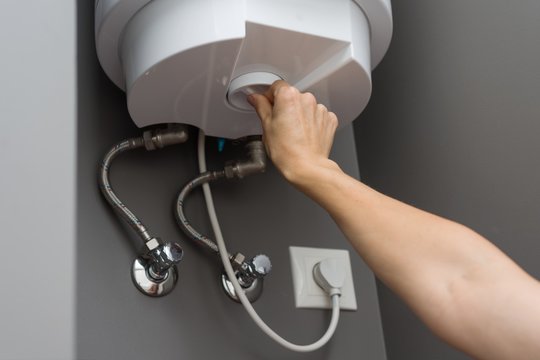How to Keep Your Home's Hot Water System Functioning Well
How to Keep Your Home's Hot Water System Functioning Well
Blog Article
Are you trying to find advice involving Tips For Maintaining Your Hot Water Heater?

Hot water is necessary for daily comfort, whether it's for a revitalizing shower or cleaning recipes. To ensure your warm water system runs successfully and lasts longer, regular upkeep is crucial. This write-up provides useful ideas and understandings on exactly how to keep your home's warm water system to stay clear of disturbances and pricey fixings.
Intro
Keeping your home's warm water system could appear overwhelming, however with a couple of basic steps, you can ensure it operates smoothly for years ahead. This overview covers every little thing from recognizing your warm water system to do it yourself upkeep pointers and knowing when to hire expert help.
Importance of Maintaining Your Warm Water System
Normal upkeep not only prolongs the lifespan of your hot water system yet likewise ensures it runs effectively. Neglecting upkeep can result in lowered effectiveness, higher power expenses, and even early failure of the system.
Indicators Your Hot Water System Requirements Maintenance
Recognizing when your hot water system requires interest can prevent significant concerns. Watch out for signs such as irregular water temperature, odd noises from the heating system, or rusty water.
Recognizing Your Hot Water System
Prior to diving into upkeep tasks, it's practical to recognize the standard elements of your hot water system. Commonly, this consists of the water heater itself, pipelines, anode rods, and temperature controls.
Month-to-month Maintenance Tasks
Regular month-to-month checks can help capture small issues prior to they escalate.
Purging the Water Heater
Purging your hot water heater eliminates debris build-up, improving performance and extending its life.
Monitoring and Changing Anode Rods
Anode rods stop corrosion inside the container. Examining and changing them when worn out is vital.
Inspecting and Readjusting Temperature Settings
Readjusting the temperature settings ensures optimal efficiency and security.
Do It Yourself Tips for Maintenance
You can execute a number of upkeep jobs on your own to maintain your warm water system in top problem.
Checking for Leakages
Frequently evaluate pipes and links for leaks, as these can cause water damages and greater expenses.
Examining Pressure Alleviation Valves
Testing the pressure safety valve ensures it works appropriately and avoids too much pressure accumulation.
Shielding Pipes
Protecting warm water pipes decreases warm loss and can conserve energy.
When to Call a Professional
While DIY upkeep is beneficial, some problems call for professional experience.
Facility Issues Needing Specialist Help
Instances include significant leaks, electrical issues, or if your hot water heater is consistently underperforming.
Routine Expert Upkeep Benefits
Professional maintenance can consist of detailed evaluations, tune-ups, and making certain conformity with safety and security criteria.
Conclusion
Regular maintenance of your home's warm water system is necessary for performance, longevity, and cost savings. By complying with these ideas and recognizing when to look for expert aid, you can make certain a reliable supply of hot water without unexpected disturbances.
How to Maintain an Instant Hot Water Heater
Before tinkering with your hot water heater, make sure that it’s not powered on. You also have to turn off the main circuit breaker and shut off the main gas line to prevent accidents. Also turn off the water valves connected to your unit to prevent water from flowing into and out of the appliance. 2. When you’re done, you have to detach the purge valves’ caps. These look like the letter “T†and are situated on either side of the water valves. Doing so will release any pressure that has accumulated inside the valves while at the same time avoid hot water from shooting out and burning your skin. 3. When the purge valves’ caps are removed, you have to connect your hosing lines to the valves. Your unit should have come with three hoses but if it didn’t, you can purchase these things from any hardware or home repair shops. You can also get them from retail stores that sell water heating systems. Read the user’s manual and follow it to complete this task properly. When the hosing lines are connected, open the purge port’s valves. 4. You should never use harsh chemical cleaners or solutions when cleaning your unit. Make use of white vinegar instead. It should be undiluted and you’ll probably use about 2 gallons. 5. Now flush your water heater. This task should probably take about 40 minutes. We can’t give you specific directions for this because the procedure is carried out depending on the type, model and brand of your heater. With that being said, refer to the user’s manual. 6. When you’re done draining the unit, you have to turn off the purge port valves again. Remove the hosing lines that you earlier installed on each of the water valves. Put the valve caps (purge port) back in their respective places and be very careful so as not to damage the rubber discs that are found inside these caps. 7. Now that everything’s back in place, check your user’s manual again to find out how to reactivate your water heating system. 8. Once it is working, turn one of your hot water faucets on just to let air pass through the heater’s water supply pipes. Leave the tap on until water flows smoothly out of it. https://www.orrplumbing.com/blog/2014/september/how-to-maintain-an-instant-hot-water-heater/

We were made aware of that editorial on What Kind of Maintenance Do Water Heaters Need? from someone on another domain. You should take the opportunity to promote this entry if you liked it. Thank you for going through it.
Call Today Report this page